Abstract
OBJECTIVE: The authors used data from a larger study to evaluate the long-term effects of a peer advocate intervention on condom and contraceptive use among HIV-infected women and women at high risk for HIV infection. METHODS: HIV-infected women in one study and women at high risk for HIV infection in a second study were selected from the Women and Infants Demonstration Project and assigned to a standard or an enhanced HIV prevention treatment group. The enhanced intervention included support groups and one-on-one contacts with peer advocates tailored to clients' needs. The authors interviewed women at baseline and at 6-, 12- and 18-months, and measured changes in consistency of condom and contraceptive use and in self-efficacy and perceived advantages and disadvantages of condom and contraceptive use. RESULTS: Of HIV-infected women, the enhanced group had improved consistency in condom use, increased perceived advantages of condom use, and increased level of self-efficacy compared with the standard group. Of women at risk, the enhanced intervention group at six months maintained consistent condom use with a main partner and perceived more benefit of condom use compared with the standard group. These differences diminished at 12 months. CONCLUSIONS: The enhanced intervention was generally effective in the HIV+ study. In the at-risk study, however, intervention effects were minimal and short-lived. Factors related to the theory, intervention design, and sample characteristics help explain these differences.
Full text
PDF
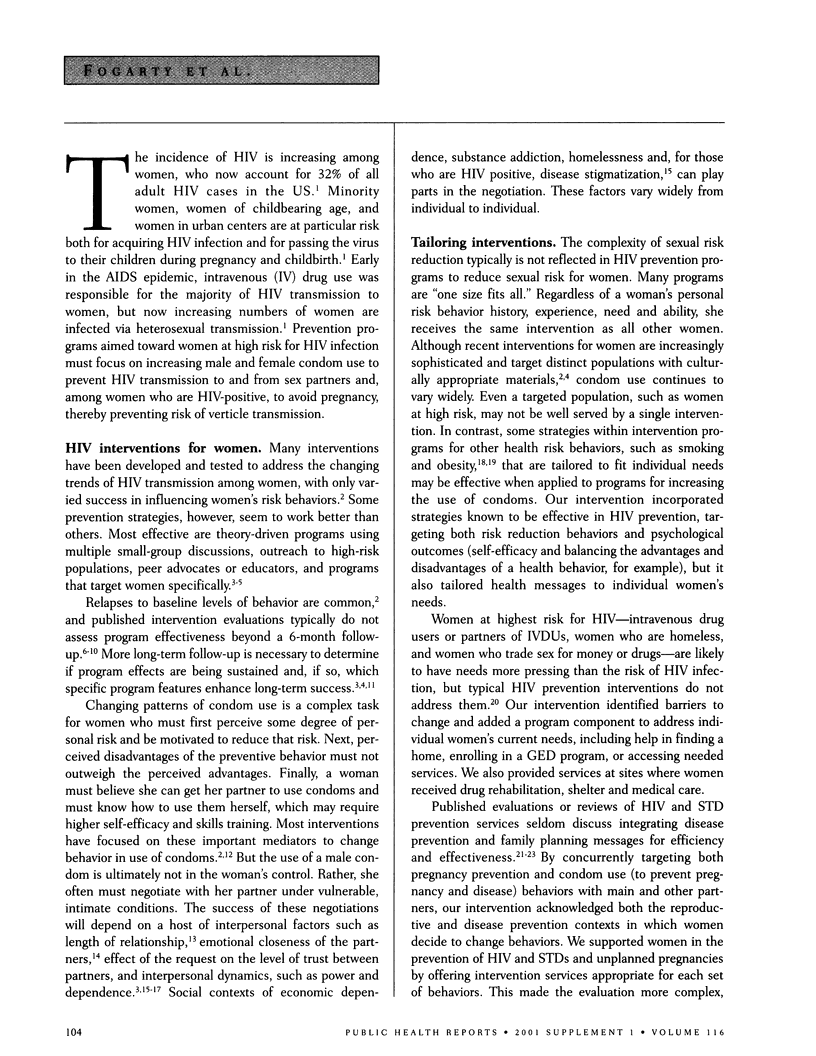
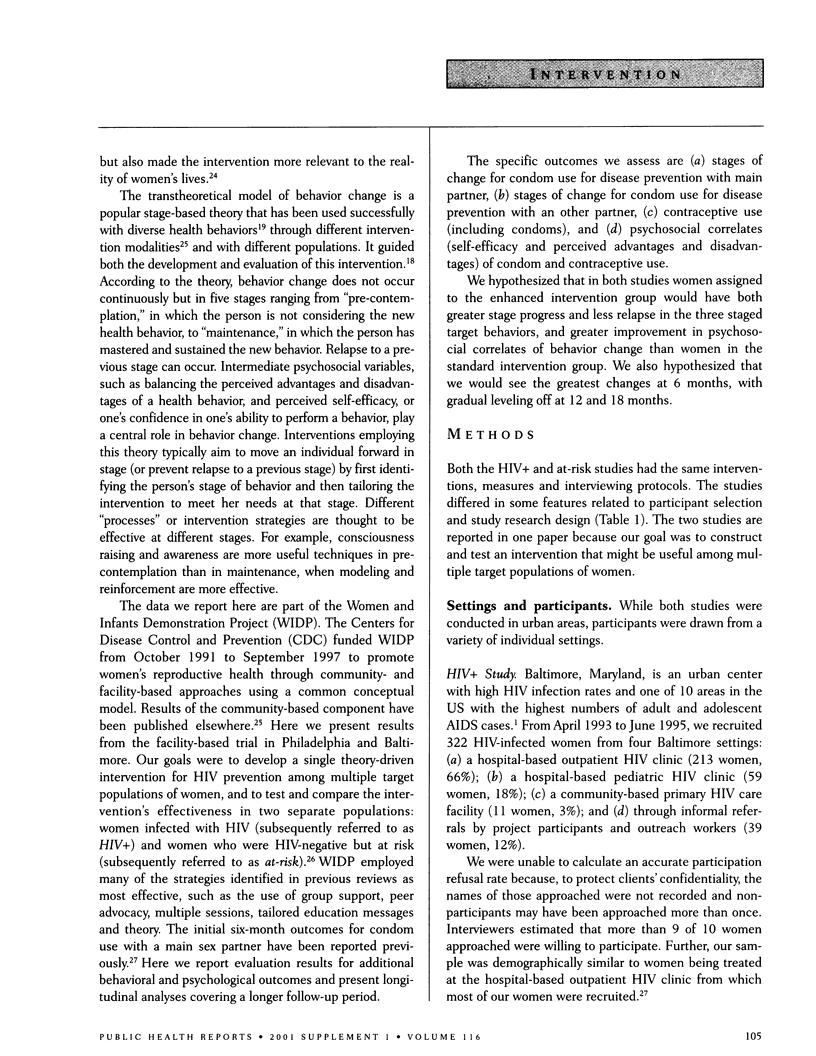
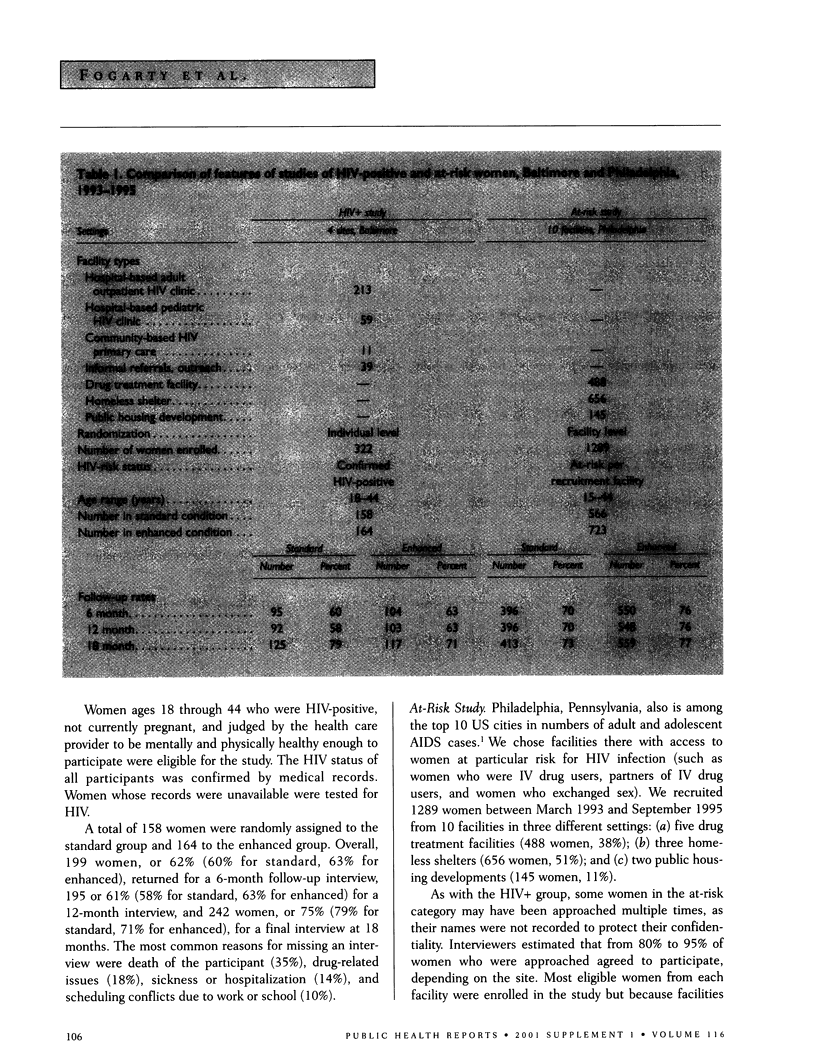
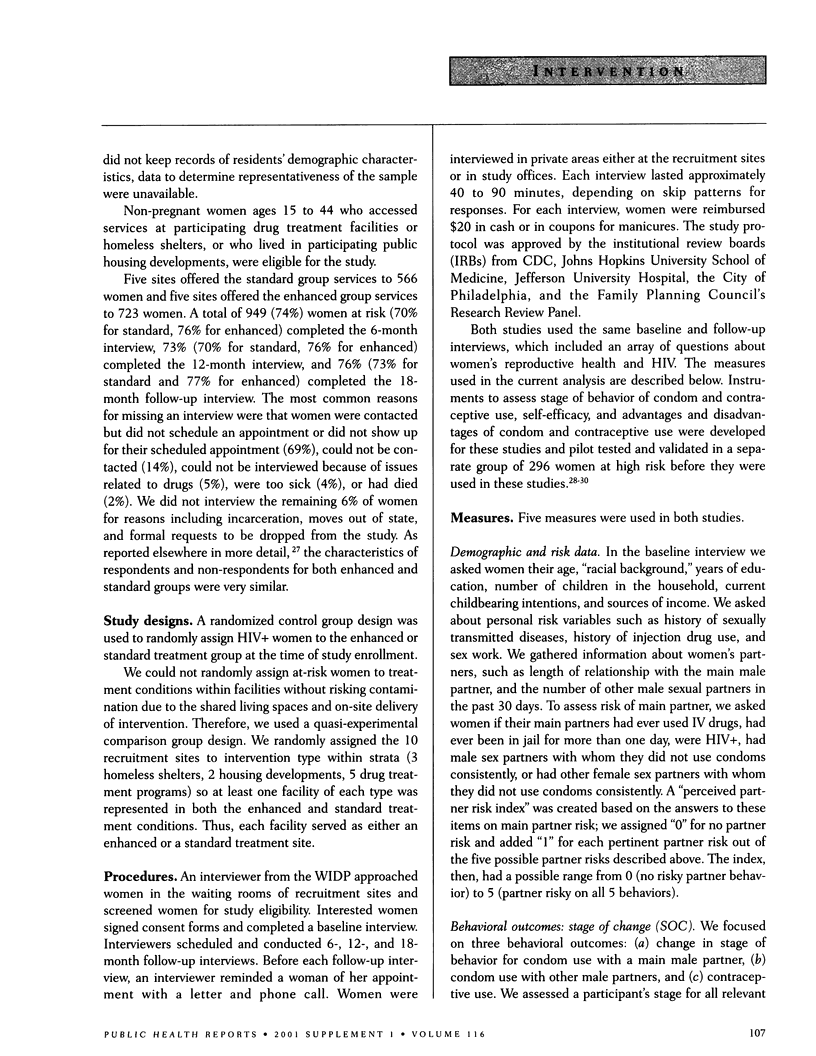
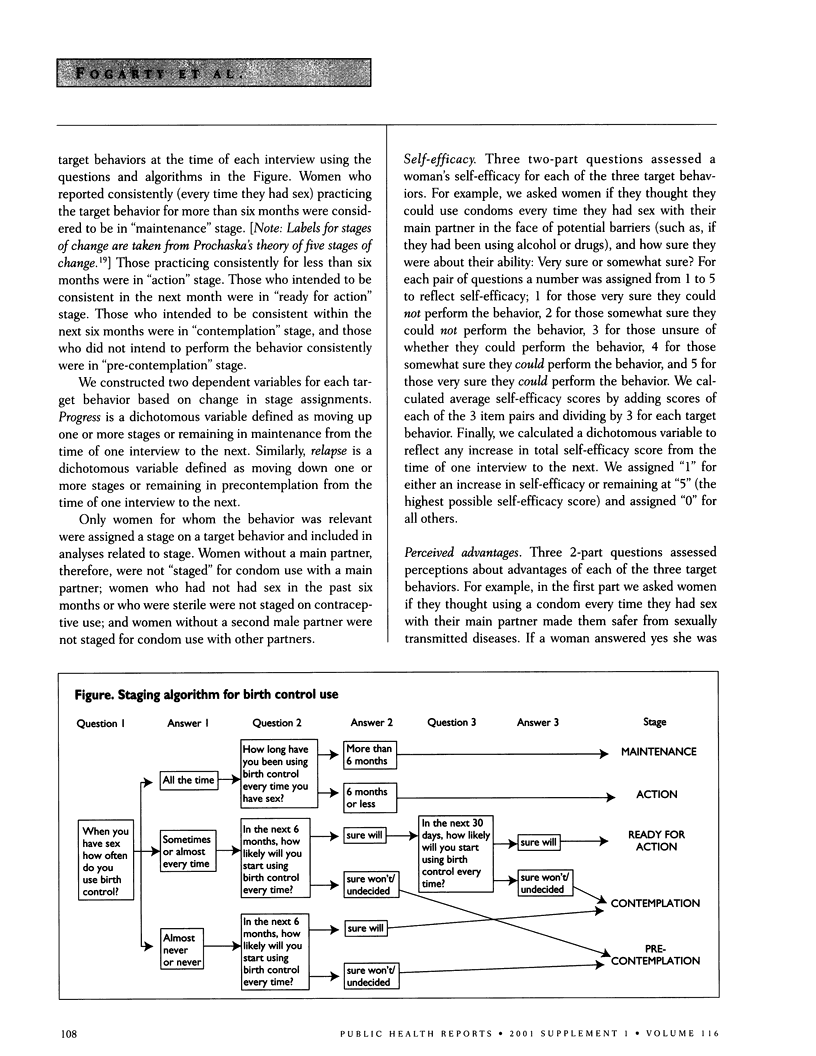

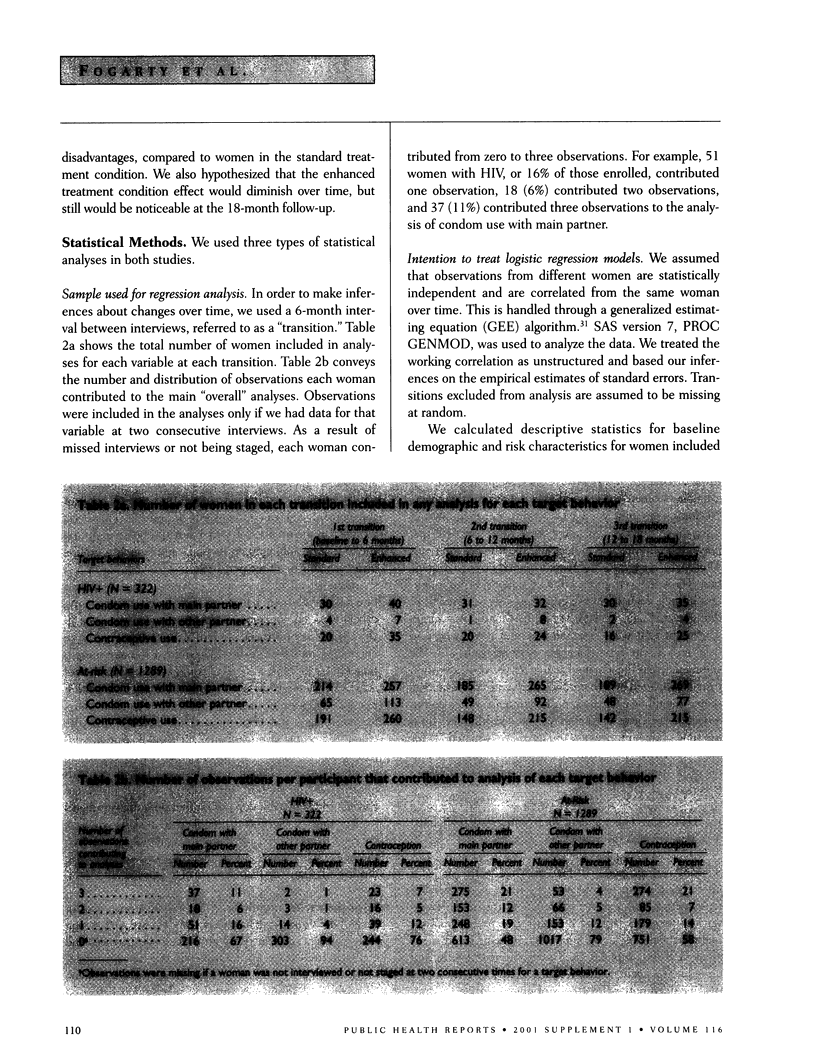

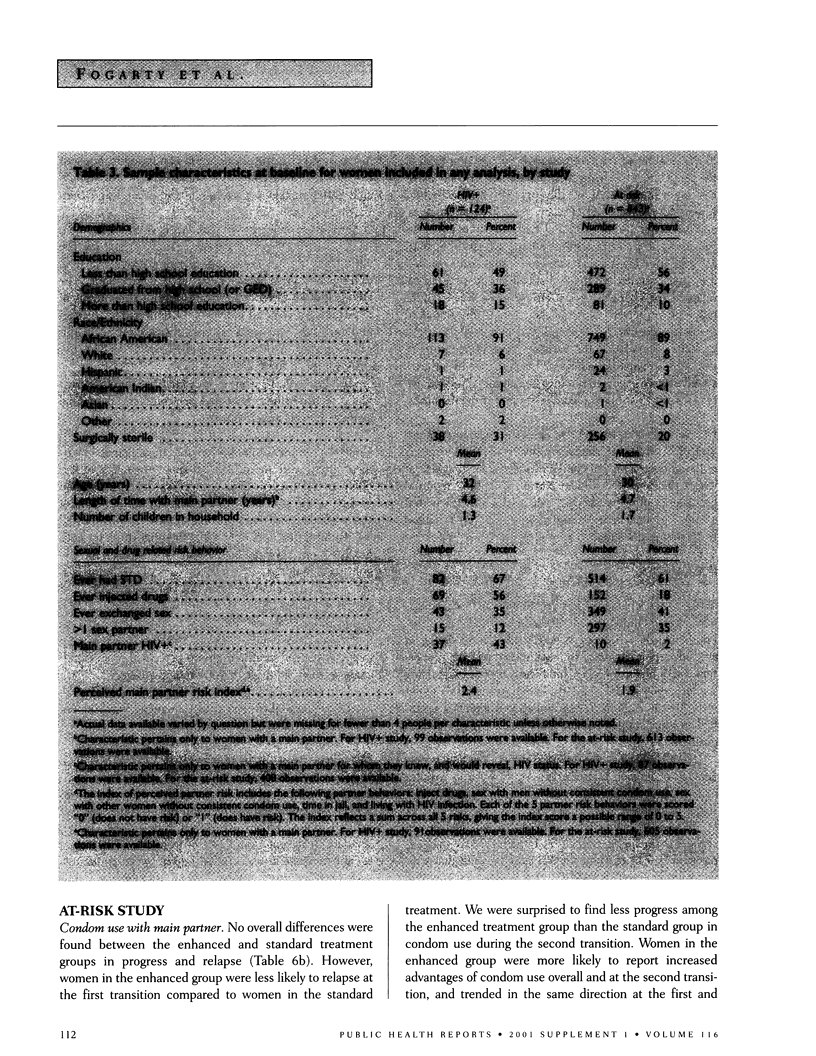
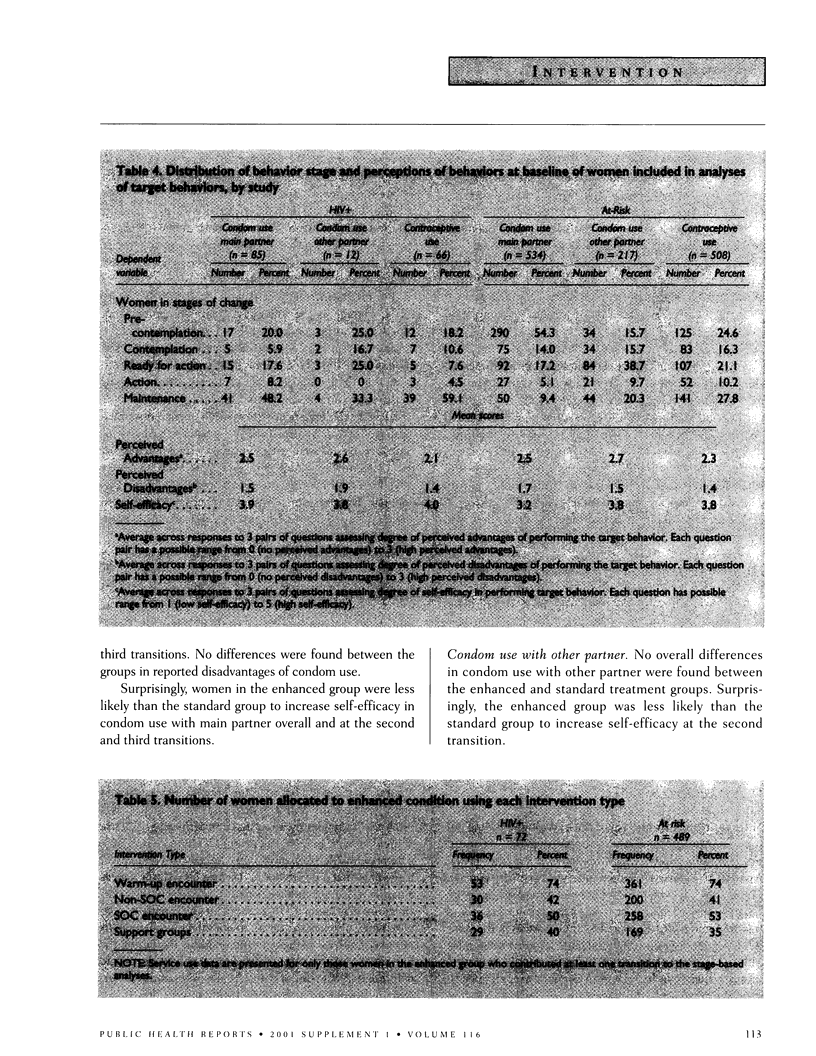
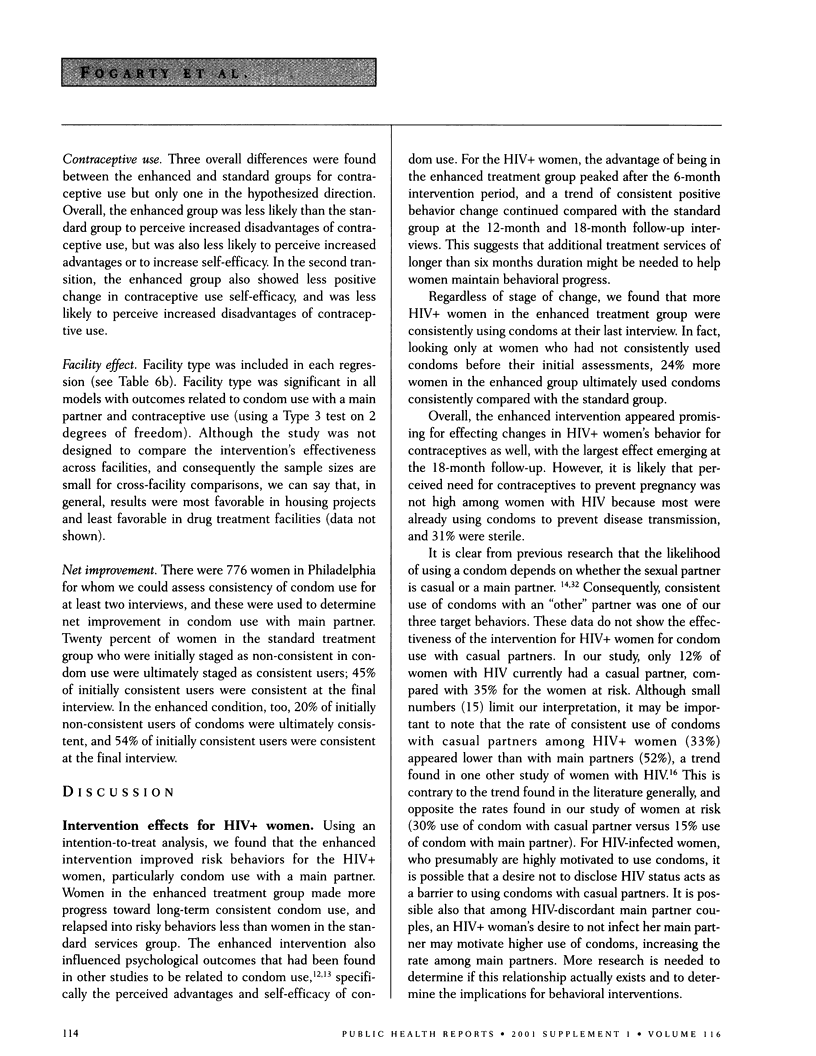
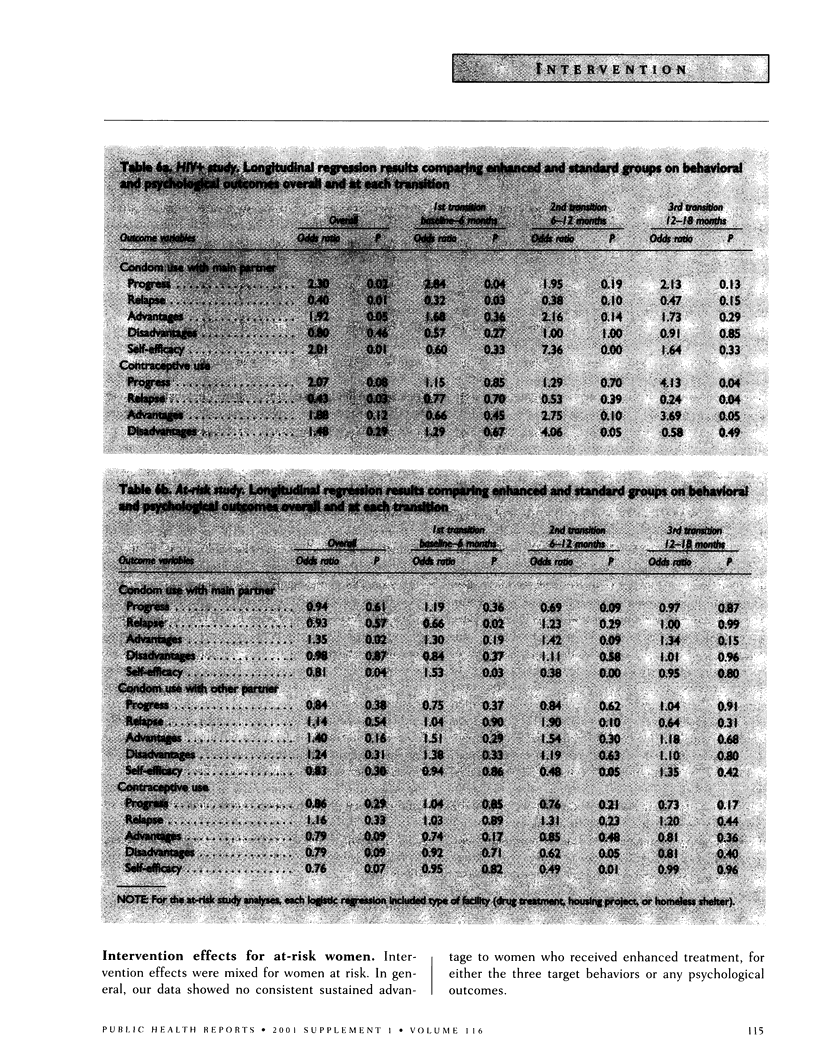
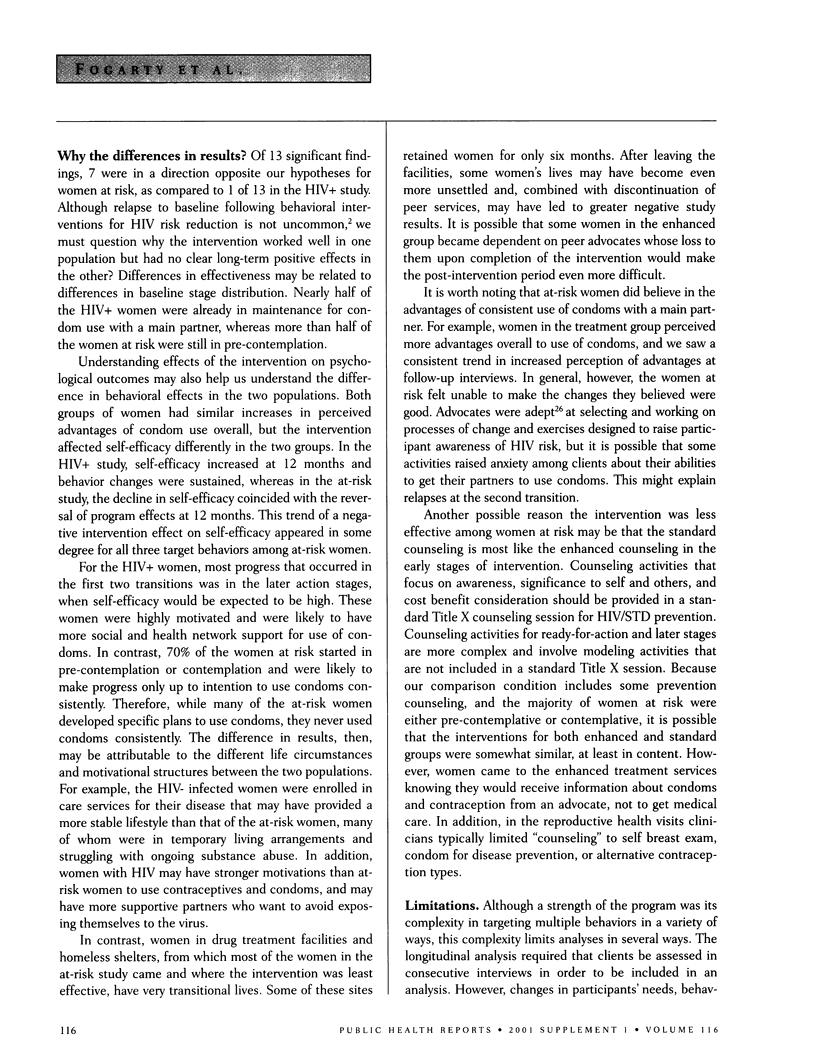
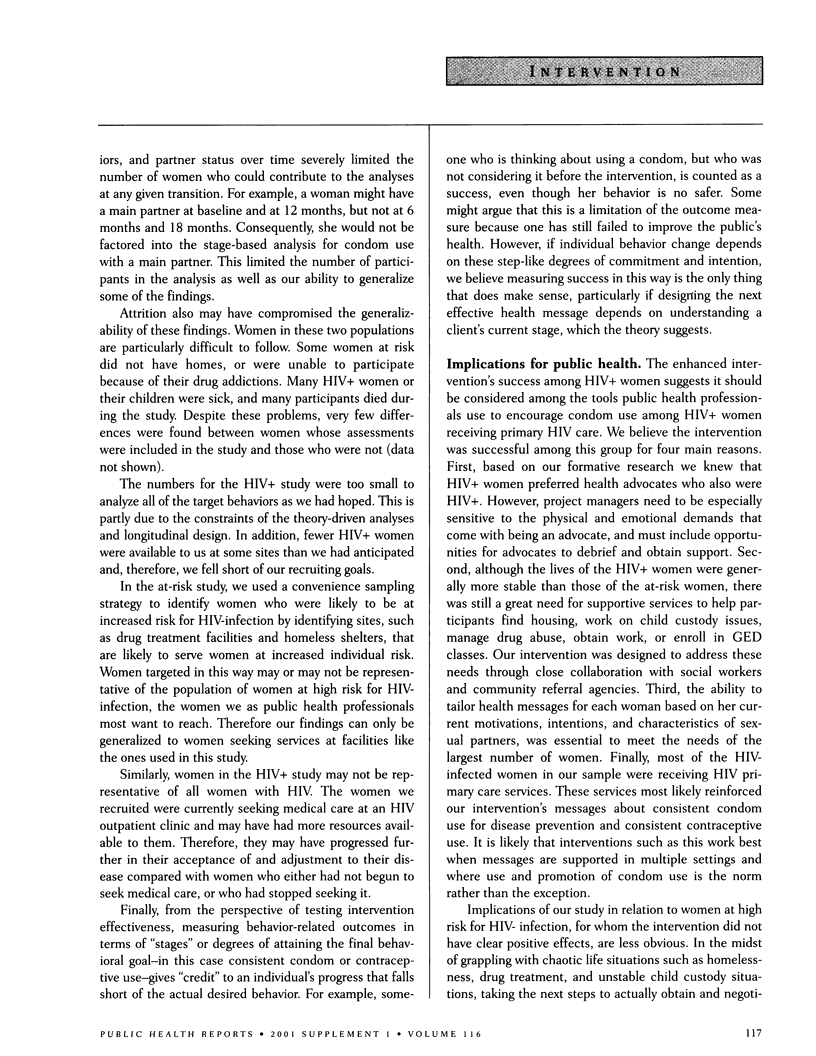
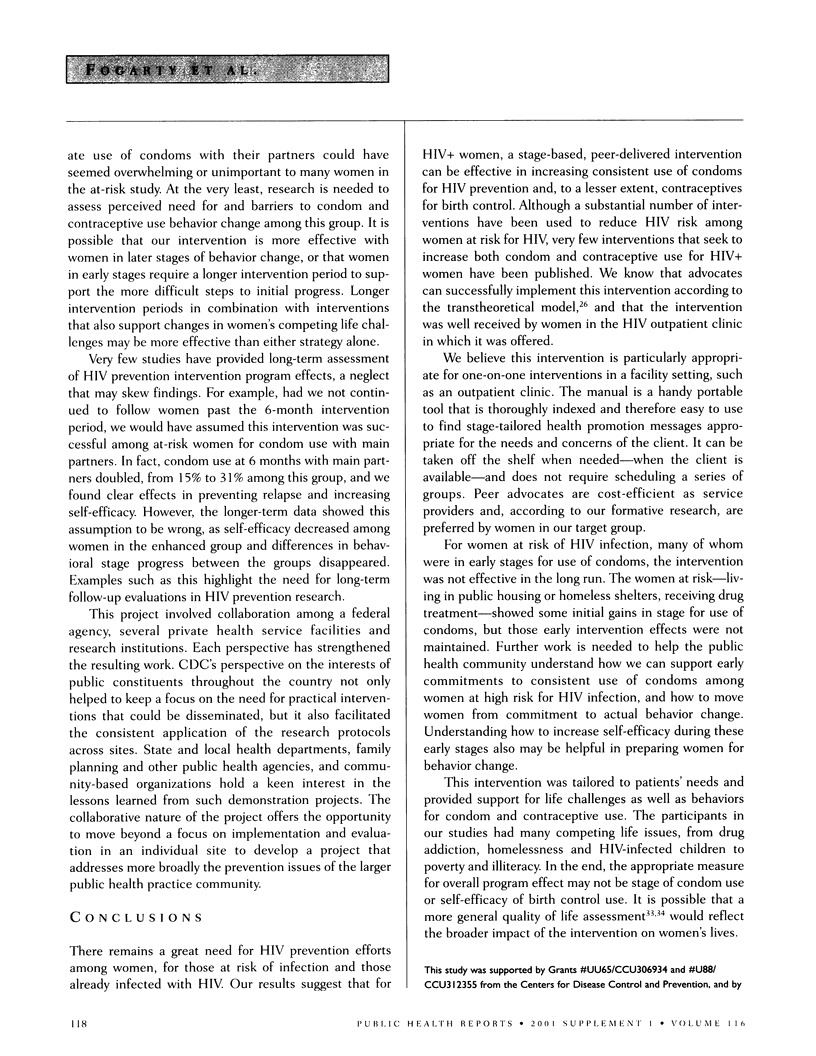
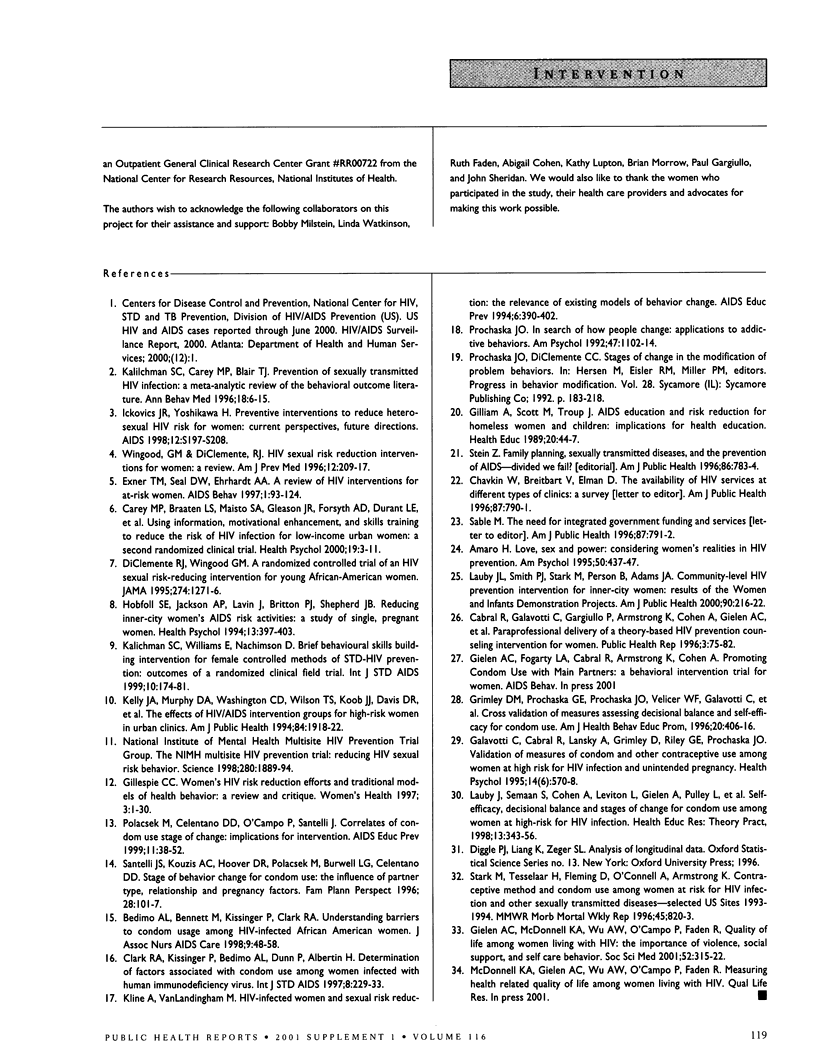
Selected References
These references are in PubMed. This may not be the complete list of references from this article.
- Amaro H. Love, sex, and power. Considering women's realities in HIV prevention. Am Psychol. 1995 Jun;50(6):437–447. doi: 10.1037//0003-066x.50.6.437. [DOI] [PubMed] [Google Scholar]
- Bedimo A. L., Bennett M., Kissinger P., Clark R. A. Understanding barriers to condom usage among HIV-infected African American women. J Assoc Nurses AIDS Care. 1998 May-Jun;9(3):48–58. doi: 10.1016/S1055-3290(98)80019-8. [DOI] [PubMed] [Google Scholar]
- Cabral R. J., Galavotti C., Gargiullo P. M., Armstrong K., Cohen A., Gielen A. C., Watkinson L. Paraprofessional delivery of a theory based HIV prevention counseling intervention for women. Public Health Rep. 1996;111 (Suppl 1):75–82. [PMC free article] [PubMed] [Google Scholar]
- Carey M. P., Braaten L. S., Maisto S. A., Gleason J. R., Forsyth A. D., Durant L. E., Jaworski B. C. Using information, motivational enhancement, and skills training to reduce the risk of HIV infection for low-income urban women: a second randomized clinical trial. Health Psychol. 2000 Jan;19(1):3–11. doi: 10.1037//0278-6133.19.1.3. [DOI] [PubMed] [Google Scholar]
- Centers for Disease Control and Prevention (CDC) Contraceptive method and condom use among women at risk for HIV infection and other sexually transmitted diseases--selected U.S. sites, 1993-1994. MMWR Morb Mortal Wkly Rep. 1996 Sep 27;45(38):820–823. [PubMed] [Google Scholar]
- Clark R. A., Kissinger P., Bedimo A. L., Dunn P., Albertin H. Determination of factors associated with condom use among women infected with human immunodeficiency virus. Int J STD AIDS. 1997 Apr;8(4):229–233. doi: 10.1258/0956462971919976. [DOI] [PubMed] [Google Scholar]
- DiClemente R. J., Wingood G. M. A randomized controlled trial of an HIV sexual risk-reduction intervention for young African-American women. JAMA. 1995 Oct 25;274(16):1271–1276. [PubMed] [Google Scholar]
- Galavotti C., Cabral R. J., Lansky A., Grimley D. M., Riley G. E., Prochaska J. O. Validation of measures of condom and other contraceptive use among women at high risk for HIV infection and unintended pregnancy. Health Psychol. 1995 Nov;14(6):570–578. doi: 10.1037//0278-6133.14.6.570. [DOI] [PubMed] [Google Scholar]
- Gielen A. C., McDonnell K. A., Wu A. W., O'Campo P., Faden R. Quality of life among women living with HIV: the importance violence, social support, and self care behaviors. Soc Sci Med. 2001 Jan;52(2):315–322. doi: 10.1016/s0277-9536(00)00135-0. [DOI] [PubMed] [Google Scholar]
- Gillespie C. C. Women's HIV risk reduction efforts and traditional models of health behavior: a review and critique. Womens Health. 1997 Spring;3(1):1–30. [PubMed] [Google Scholar]
- Gilliam A., Scott M., Troup J. AIDS education and risk reduction for homeless women and children: implications for health education. Health Educ. 1989 Dec;20(5):44–47. [PubMed] [Google Scholar]
- Hobfoll S. E., Jackson A. P., Lavin J., Britton P. J., Shepherd J. B. Reducing inner-city women's AIDS risk activities: a study of single, pregnant women. Health Psychol. 1994 Sep;13(5):397–403. doi: 10.1037//0278-6133.13.5.397. [DOI] [PubMed] [Google Scholar]
- Ickovics J. R., Yoshikawa H. Preventive interventions to reduce heterosexual HIV risk for women: current perspectives, future directions. AIDS. 1998;12 (Suppl A):S197–S208. [PubMed] [Google Scholar]
- Kalichman S. C., Williams E., Nachimson D. Brief behavioural skills building intervention for female controlled methods of STD-HIV prevention: outcomes of a randomized clinical field trial. Int J STD AIDS. 1999 Mar;10(3):174–181. doi: 10.1258/0956462991913844. [DOI] [PubMed] [Google Scholar]
- Kelly J. A., Murphy D. A., Washington C. D., Wilson T. S., Koob J. J., Davis D. R., Ledezma G., Davantes B. The effects of HIV/AIDS intervention groups for high-risk women in urban clinics. Am J Public Health. 1994 Dec;84(12):1918–1922. doi: 10.2105/ajph.84.12.1918. [DOI] [PMC free article] [PubMed] [Google Scholar]
- Kline A., VanLandingham M. HIV-infected women and sexual risk reduction: the relevance of existing models of behavior change. AIDS Educ Prev. 1994 Oct;6(5):390–402. [PubMed] [Google Scholar]
- Lauby J. L., Smith P. J., Stark M., Person B., Adams J. A community-level HIV prevention intervention for inner-city women: results of the women and infants demonstration projects. Am J Public Health. 2000 Feb;90(2):216–222. doi: 10.2105/ajph.90.2.216. [DOI] [PMC free article] [PubMed] [Google Scholar]
- Polacsek M., Celentano D. D., O'Campo P., Santelli J. Correlates of condom use stage of change: implications for intervention. AIDS Educ Prev. 1999 Feb;11(1):38–52. [PubMed] [Google Scholar]
- Prochaska J. O., DiClemente C. C., Norcross J. C. In search of how people change. Applications to addictive behaviors. Am Psychol. 1992 Sep;47(9):1102–1114. doi: 10.1037//0003-066x.47.9.1102. [DOI] [PubMed] [Google Scholar]
- Prochaska J. O., DiClemente C. C. Stages of change in the modification of problem behaviors. Prog Behav Modif. 1992;28:183–218. [PubMed] [Google Scholar]
- Santelli J. S., Kouzis A. C., Hoover D. R., Polacsek M., Burwell L. G., Celentano D. D. Stage of behavior change for condom use: the influence of partner type, relationship and pregnancy factors. Fam Plann Perspect. 1996 May-Jun;28(3):101–107. [PubMed] [Google Scholar]
- Stein Z. Family planning, sexually transmitted diseases, and the prevention of AIDS--divided we fail? Am J Public Health. 1996 Jun;86(6):783–784. doi: 10.2105/ajph.86.6.783. [DOI] [PMC free article] [PubMed] [Google Scholar]
- Wingood G. M., DiClemente R. J. HIV sexual risk reduction interventions for women: a review. Am J Prev Med. 1996 May-Jun;12(3):209–217. [PubMed] [Google Scholar]


